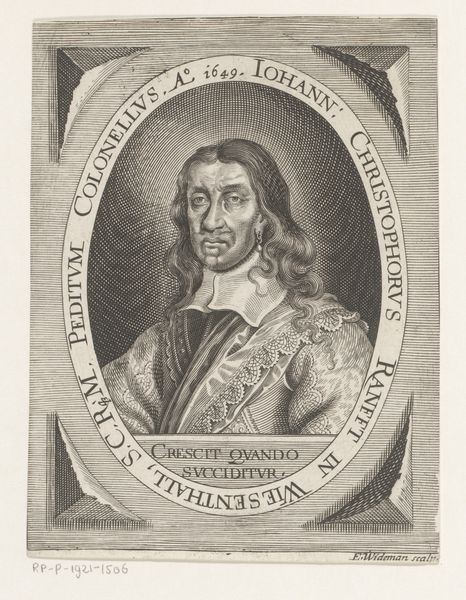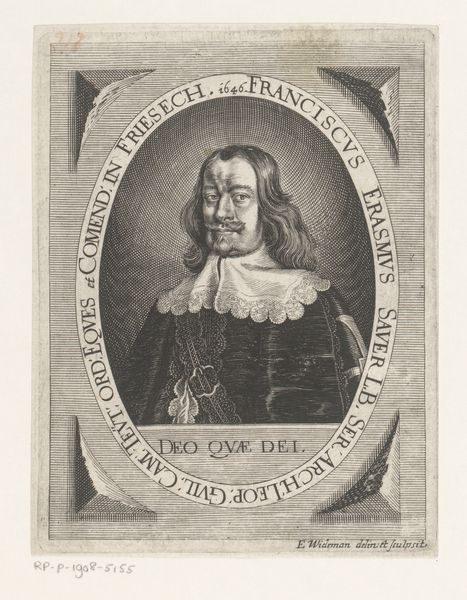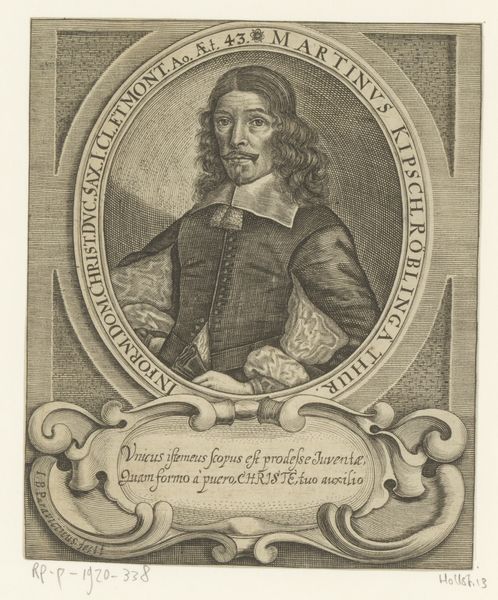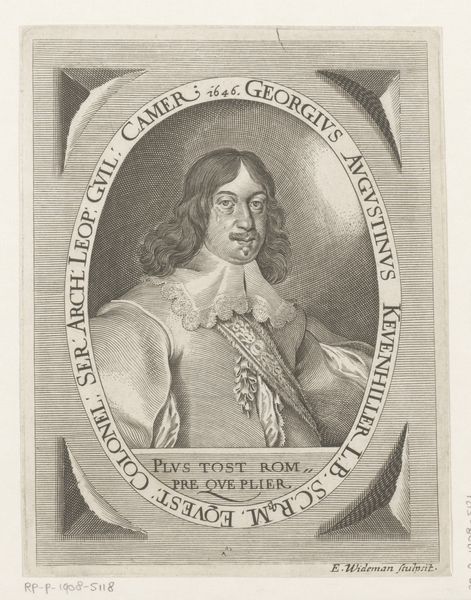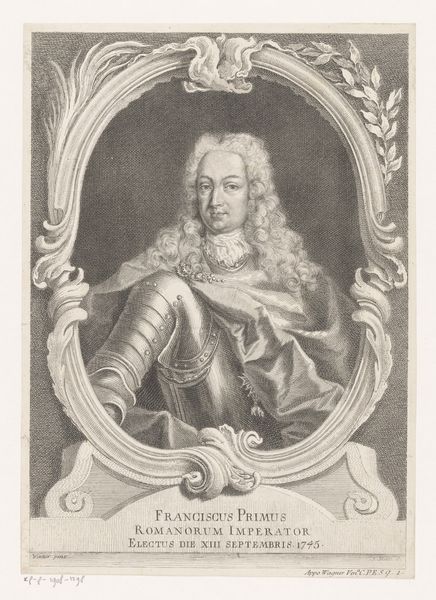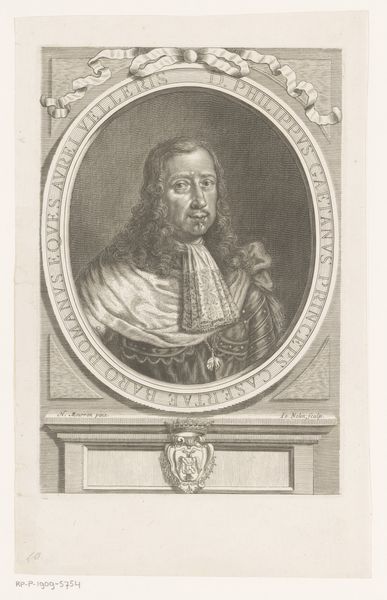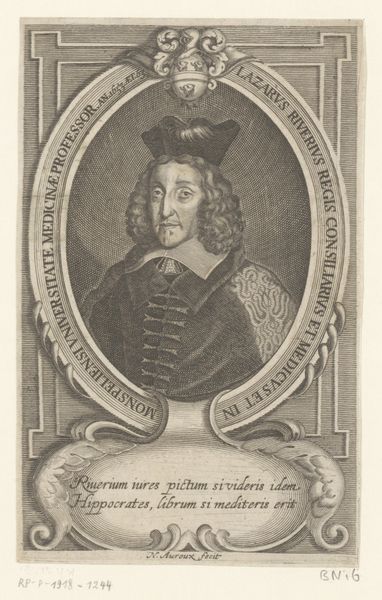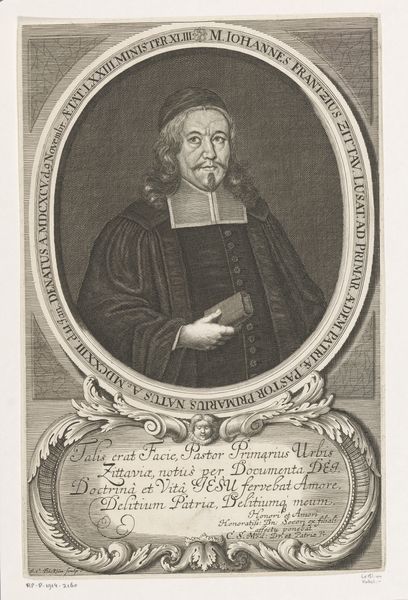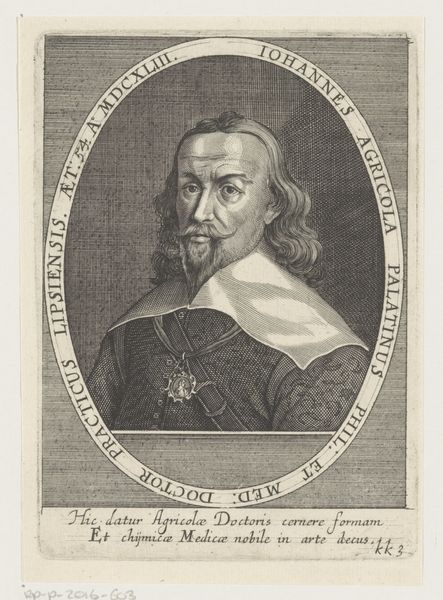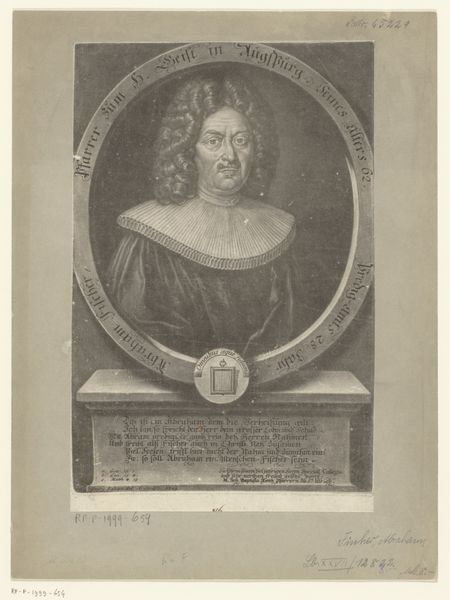
engraving
#
portrait
#
baroque
#
history-painting
#
engraving
Dimensions: height 143 mm, width 108 mm
Copyright: Rijks Museum: Open Domain
Editor: So here we have Elias Widemann's "Portret van Heinrich von Mercy" from 1649, an engraving held at the Rijksmuseum. The detail is amazing, even in print. What's your take on this piece? Curator: I see this portrait as more than just a depiction of a military figure. It's a carefully constructed image designed to convey power and legitimacy in a time of great political and social upheaval. Editor: Can you elaborate on that? The "upheaval" part. Curator: Certainly. Consider the historical context: 1649, the end of the Thirty Years' War and, significantly, the execution of Charles I in England. Power structures across Europe were being challenged, weren't they? This portrait, with its emphasis on Mercy's titles and the symbolic weight of his armor, can be seen as an attempt to reinforce traditional authority in a period of intense questioning. How does the artist use line and form to achieve this effect? Editor: Well, the armor and the text give off a bold message and appear larger than life, so the delicate lines add sophistication, maybe. The way it is framed is also very elegant. It balances both sides very well. Curator: Precisely. The Baroque style often served the interests of the powerful, and here, Widemann utilizes its conventions to portray Mercy not just as an individual, but as a representation of steadfastness. Editor: Interesting! It's like the portrait is making an argument, rather than just showing a likeness. Thanks, that changes the whole viewing experience. Curator: Absolutely, and by recognizing these embedded messages, we can see how art plays a crucial role in shaping historical narratives and perceptions of power.
Comments
No comments
Be the first to comment and join the conversation on the ultimate creative platform.
